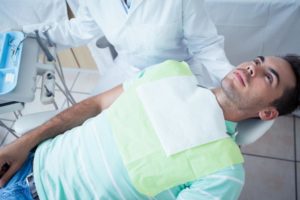4 Things to Know About Your Dental Crown Procedure
 Your dentist just informed you about your need for a crown…so what exactly will this entail?
Your dentist just informed you about your need for a crown…so what exactly will this entail?
A crown is a tooth-shaped cap that covers the entirety of the remaining tooth. There are multiple reasons why someone would need a crown. Sometimes a crown is needed to prevent your remaining teeth from shifting or other cosmetic reasons, and sometimes a bridge is needed to hold a weak tooth together.
A crown procedure normally requires more than one visit, so we want you to know what to expect.
Prep before the crown
Before the crown can be properly placed, your dentist will need to examine your tooth to be sure it’s the right shape to support the crown. Your dentist will reshape your tooth. Once your tooth is the correct shape, it can properly receive the crown. Multiple types of crowns exist, including porcelain, metal, or a combination of the two. Your dentist will most likely suggest a certain material during this time as well.
First impressions
Once your tooth has been shaped, they will take an impression of the tooth and all of the teeth around it. This is an extremely important step because the permanent crown will be made in a dental lab according to the impression.
Temporary crown
Before sending you off after your first visit, your dentist will fit a temporary crown onto your tooth. This temporary crown will protect your tooth until your permanent crown is ready.
Permanent crown
Once you hear that your permanent crown is ready, you’ll need to visit the dentist’s office a second time. This should be a fairly simple visit. Your dentist will use a special adhesive to attach the permanent crown, and you’ll be all set!
Dental crowns are permanent, but that doesn’t mean they can’t become loose or even develop a new cavity. It’s important to practice good hygiene so the crown will last as long as possible. A common cause of a crowned tooth developing a new cavity is insufficient brushing at the gum line and lack of flossing. Protect your gums and teeth from disease by brushing and flossing daily. Chewing hard or sticky foods can cause the crown to be pulled and loosened, so try to avoid eating hard foods and sweets, especially 24 hours after the procedure.
We will be more than happy to answer any questions you may have about an upcoming crown procedure. Give us a call at (303) 759-5652.

